'72 Deluxe Reverb
Restoration/Conversion Mods
This 70's pull-boost Fender amp was badly modded in all sorts of ways. The 12-inch speaker board had been replaced by a cheap 3/4" thick piece of ply mounted with two Univox 10" speakers. The PSU had diode rectifiers along with resistors to drop the voltage to the power tubes, quite contradictory in terms of how sag occurs in that part of the circuit. The PSU filter caps were reversed in order (small on B+, large in the front of the Preamp). Finally, the audio circuit was hacked quite badly and couldn't produce any kind of clean tone. Basically, the amp lacked power, tone and definition.
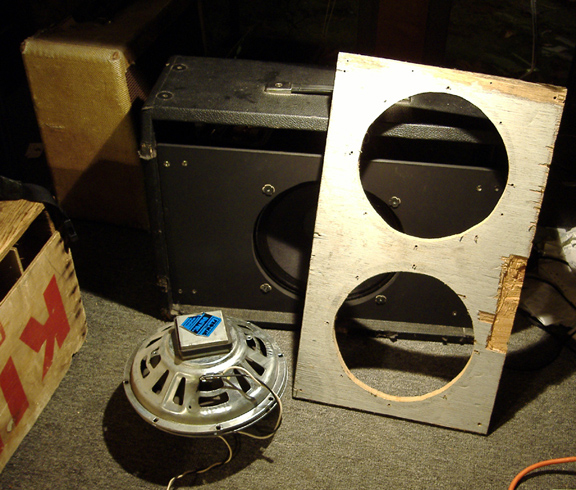 |
Replacing the speaker board is not trivial in these amps since it is inserted in a slotted cavity prior to attaching the top panel of the finger-joined cabinet. This means you can't re-insert the same way without tearing off the top or bottom panel - this is not an option really. Instead, a floating speaker board is introduced using L-brackets. The board is cut 1/8" short all around so there's no rattling against the cab - an air-tight joint is not required in an open back amp. In fact, a floating board allows for a less stiff sounding amp.
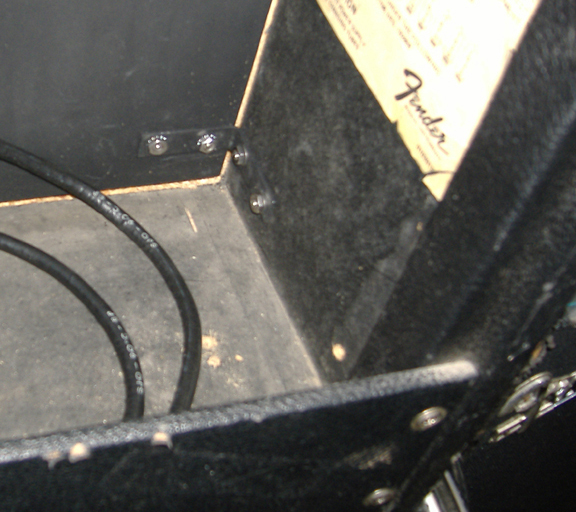 |
The filter caps receive an upgrade following replacement of stock topology. A single 47uF cap is used instead of the dual 20uF and 22uF caps are used for the preamp and PI circuit filtering. Lower filter resistors are used yielding greater headroom in the front of the amp.
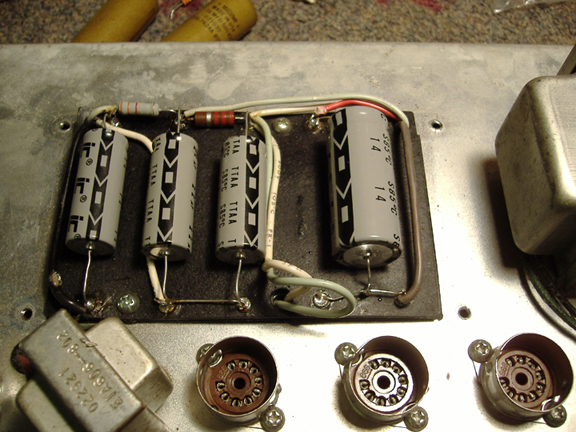 |
The bias circuit is converted to AB763 style and it receives a second filtering cap to bring down the ripple on the bias voltage - one extra step in reducing hum in the amp.
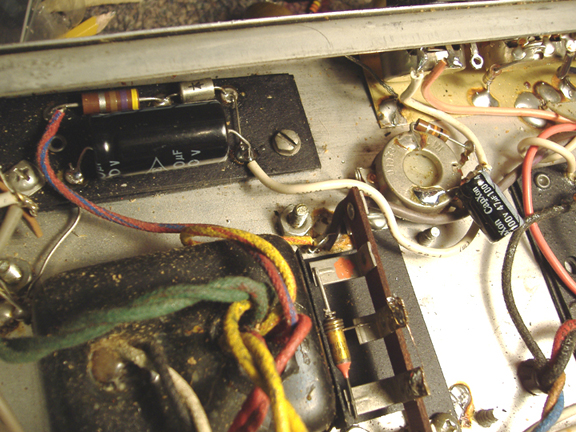 |
The signal path receives my favorite Deluxe amp tweaks - with 12ax7's throughout the circuit can give you a Nugent/Stranglehold high-gain response. But in this case the amp was going to a traditional Blues player who didn't need that much gain and distortion so I used 12au7's and 12at7's for the main signal path. The circuit is internally routed to allow using the clean channel as a recovery amp/EQ for the reverb return (Sampo Kolkki's idea), the previous Reverb control turns into a Dwell control.
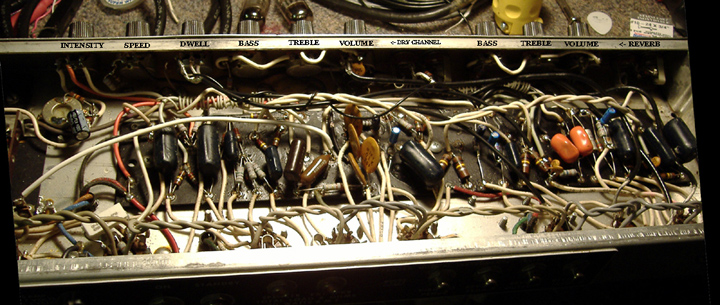 |
The Tremolo circuit is taken from the '64 Princeton circuit which modulates the bias on the power tubes. The grounding of the oscillator circuit is taken away from the signal path grounding and attached to chassis ground - this elliminates oscillator noise feeding through to the audio even when Trem intensity is off. Notice this oscillator circuit is always running unless the Trem pedal is plugged in.
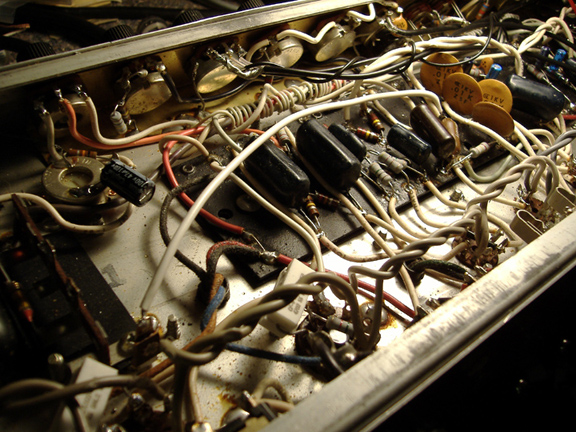 |
The wires leading to the Reverb pan do not attach to the chassis using the standard RCA connectors. Instead, the wires go directly to the audio circuitry using common grounding attachement points. Avoiding chassis ground via the reverb send and return jacks provides a reduction of hum in the Reverb circuit.
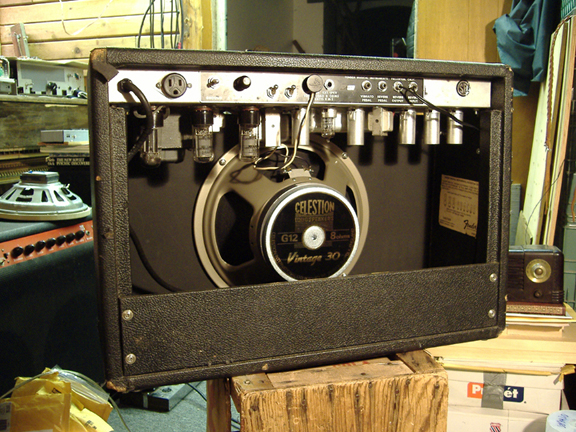 |
A high quality Celestion Classic 30 is used in the end - it delivers everything the amp dishes out no matter the gain levels. It's the perfect match for this amp.
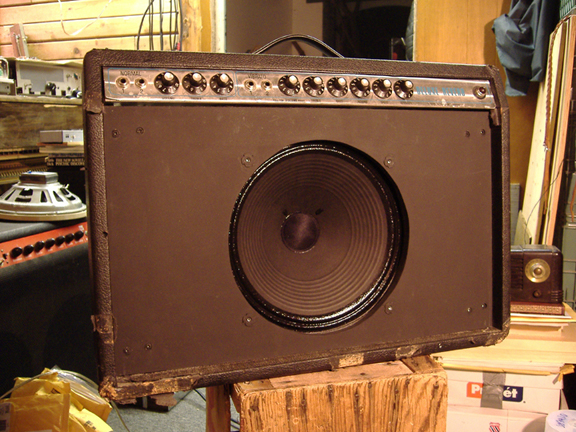 |
With the pull-boost circuitry removed and a modified AB763 style signal path this baby produces premium Fender tones with virtually no hum.
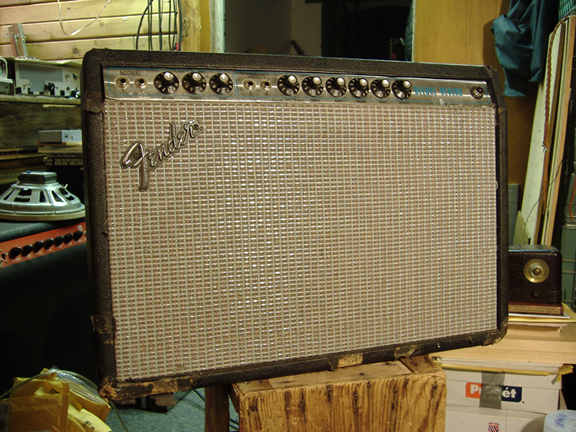 |
viva Analog /// jc -> lynx.net









